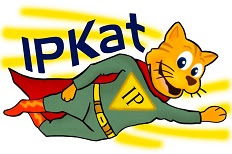This week I received my WIPO Magazine and I was happy to see that Chile made the front cover. I immediately recognised the words Sello de Origen and of course, quickly I went to read the article titled ‘Adding value to Chile’s heritage products with the Sello de Origen’. I felt that I was reading the iptango in a nutshell -- from day one we have cover the news starting from ‘pica’ lemon (Chilean first GI, 2010) to their lovely ‘paine’ watermelons (last GI recorded, 2016). We have also covered other products that are still recognised by the Sello de Origen and thus, we have covered AOs, certification and collective trade marks. For those that are not familiar with this program, The Chilean Ministry of Economy together with the Chilean Instituto Nacional de Propiedad Industrial (INAPI) launched a program aiming to promote traditional products through the grant of Geographical Indication (GI), Appellation of Origin (AO), Collective Trade Marks and/or Certification Marks.
The magazine article puts forward how the program operates and brings a case study i.e. the salt of Cahuil (AO, 2013), and how successful Sello de Origen has been for their trade.
The article finishes with some of the words that we use when covering GI in general, which is that GI (in this case Sello de Origen) is a “tool for adding value to the products of …rich heritage”. When explaining the case study, the article acknowledges that the local producers are trying to develop tourism in the region and that they look to capitalize on their product and to encourage younger generations to keep the tradition which helps their future. However, the article does not cover any spoiler. And we all know that GIs do not work for everyone.
Actually, part of the Sello de Origen project is, in its first step, to identify the products, but then, there is a selection process (second step), where products are singled out if they are ‘worthy’ of IP protection. Then the question is: what is to be worthy? Any product which is the creation of a person or group of people not only is worthy of protection but must be protected. This is, if I am not mistaken, the bare notion of IP and its regulation i.e. is a set “of the intangible products of human creativity” (Abbott, Cottier & Gurry) and “Intellectual property law regulates the creation, use and exploitation of mental or creative labour” (Bently & Sherman).
While any product is worthy there is indeed the issue of GI which apart from using it as a tool for enhancing cultural value, it can sometimes have a negative effect since some of these products are created or extracted by farmers or small communities where the value given to the product is given by its uniqueness. If production is pushed and rushed due to demands, individuality will be lost -- as we are reminded in the case studies of Chulucana in Peru and Tequila in Mexico.
This last comment is not of detriment to the Sello de Origen program, on the contrary, it has been always supported by the blog. But it would be correct to see that projects and campaigns also put in ‘black and white’ the flaws and problems that SMEs may face.
Welcome to our blog for Intellectual Property Law and Practice in Latin America!
¡Bienvenidos a nuestro blog de Derecho y Práctica de la Propiedad Intelectual en Latinoamérica!
Bem-vindo ao nosso blog sobre Direito e Prática de Propriedade Intelectual na América Latina!
¡Bienvenidos a nuestro blog de Derecho y Práctica de la Propiedad Intelectual en Latinoamérica!
Bem-vindo ao nosso blog sobre Direito e Prática de Propriedade Intelectual na América Latina!
Page views since June 2008
Some IPTango moves
* Listed as one of the "Best blogs on Intellectual and Industrial Property Law". The University of Alicante Intellectual Property & Information Technology Project (UAIPIT).
* One of the only two Latin American blog listed in the "Top 100 Intellectual Property Blogs". Feedspot, as of May 2021.
* Listed as one of the "Top 15 Blogs For An Intellectual Property (IP) Enthusiasts". Buzzfeed.com, January 2017.
* Listed as one of the "World's Best IP Blogs". BananaIP.com, December 2015.
* IPTango founder Professor Jeremy Phillips was listed as one of the Managing Intellectual Property magazine's "Fifty Most Influential People" of 2005, 2011, 2013, and 2014.
* Listed as one of the "Influential intellectual property blawgs". A Dictionary of Intellectual Property Law, Peter Groves, 2011.
* Listed as one of the "Communities of Blawgers". Los blogs jurídicos y la web 2.0. para la difusión y la enseñanza del derecho, Gonzalo Ramírez Cleves, 2010.
Receive IPTango by email
Join the community of readers now! Just type your email address into the box and click 'Subscribe'
Follow IPTango on X
Popular Posts | Last 30 days
-
Roberto Gómez Bolaños , creador de los famosos personajes como ‘El Chavo del 8’ y ‘El Chapulín Colorado”, falleció el pasado 28 de noviembre...
-
Como el tema del rescate de los mineros será recurrente durante un tiempo, bien vale la pena aclarar algunos datos especialmente relacionado...
-
The World Intellectual Property Organization ( WIPO ) will hold the Ninth Session of the WIPO Conversation on Intellectual Property and Fro...
-
The official theme of the 2010 South African World Cup is under debate. The singer and songwriter, Wilfrido Vargas, accused Shakira of plagi...
-
El Tribunal Superior de Justicia de Ciudad de México determinó que Eduardo Moreno Laparade, sobrino de Cantinflas, es el "único y le...
-
En Colombia el Tribunal Superior de Barranquilla le dio la razón al escritor Gabriel García Márquez (Premio Nobel de Literatura, 1982) en un...
-
Brazilian newspapers and websites published a few days ago what will be the Logo of the World Cup 2014. According to those paper and sites...
-
Los responsables de la página web argentina de intercambio de contenidos “Taringa!", irán a juicio oral luego de que la Sala VI de ...
-
¿Qué modalidad normativa constituye aquella que impone al titular de marca registrada su uso efectivo en el mercado? En términos dogmáticos...
-
On 19 February 2009 the Argentine Film Directors Association (“Directores Argentinos Cinematográficos” or “ DAC ”) was recognized as the sol...
SEARCH THIS BLOG
BLOG ARCHIVE
-
►
2024
(2)
- ► March 2024 (1)
- ► February 2024 (1)
-
►
2023
(11)
- ► November 2023 (1)
- ► September 2023 (2)
- ► August 2023 (2)
- ► March 2023 (3)
- ► February 2023 (1)
-
►
2022
(30)
- ► December 2022 (3)
- ► November 2022 (1)
- ► October 2022 (1)
- ► September 2022 (2)
- ► August 2022 (2)
- ► March 2022 (2)
- ► February 2022 (2)
- ► January 2022 (3)
-
►
2021
(71)
- ► December 2021 (2)
- ► November 2021 (5)
- ► October 2021 (8)
- ► September 2021 (3)
- ► August 2021 (3)
- ► April 2021 (4)
- ► March 2021 (10)
- ► February 2021 (9)
- ► January 2021 (5)
-
►
2020
(80)
- ► December 2020 (11)
- ► November 2020 (3)
- ► October 2020 (8)
- ► September 2020 (12)
- ► August 2020 (21)
- ► April 2020 (1)
- ► February 2020 (1)
- ► January 2020 (1)
-
►
2019
(22)
- ► December 2019 (3)
- ► November 2019 (1)
- ► October 2019 (2)
- ► September 2019 (4)
- ► August 2019 (1)
- ► April 2019 (3)
- ► March 2019 (1)
- ► February 2019 (2)
- ► January 2019 (1)
-
►
2018
(35)
- ► December 2018 (1)
- ► November 2018 (2)
- ► October 2018 (8)
- ► September 2018 (3)
- ► August 2018 (2)
- ► April 2018 (1)
- ► March 2018 (5)
- ► February 2018 (8)
-
►
2017
(71)
- ► December 2017 (2)
- ► November 2017 (8)
- ► October 2017 (4)
- ► September 2017 (13)
- ► August 2017 (9)
- ► April 2017 (2)
- ► March 2017 (3)
- ► February 2017 (6)
- ► January 2017 (6)
-
▼
2016
(70)
- ► December 2016 (3)
- ► November 2016 (8)
- ► October 2016 (5)
- ► September 2016 (7)
- ► August 2016 (9)
- ► April 2016 (4)
- ► March 2016 (7)
- ► February 2016 (6)
- ► January 2016 (10)
-
►
2015
(89)
- ► December 2015 (6)
- ► November 2015 (10)
- ► October 2015 (9)
- ► September 2015 (6)
- ► August 2015 (8)
- ► April 2015 (9)
- ► March 2015 (9)
- ► February 2015 (9)
- ► January 2015 (5)
-
►
2014
(98)
- ► December 2014 (6)
- ► November 2014 (7)
- ► October 2014 (12)
- ► September 2014 (17)
- ► August 2014 (8)
- ► April 2014 (8)
- ► March 2014 (6)
- ► February 2014 (4)
- ► January 2014 (5)
-
►
2013
(121)
- ► December 2013 (5)
- ► November 2013 (12)
- ► October 2013 (9)
- ► September 2013 (7)
- ► August 2013 (5)
- ► April 2013 (16)
- ► March 2013 (12)
- ► February 2013 (15)
- ► January 2013 (11)
-
►
2012
(223)
- ► December 2012 (6)
- ► November 2012 (9)
- ► October 2012 (12)
- ► September 2012 (16)
- ► August 2012 (9)
- ► April 2012 (28)
- ► March 2012 (29)
- ► February 2012 (30)
- ► January 2012 (24)
-
►
2011
(293)
- ► December 2011 (22)
- ► November 2011 (32)
- ► October 2011 (20)
- ► September 2011 (52)
- ► August 2011 (19)
- ► April 2011 (31)
- ► March 2011 (16)
- ► February 2011 (20)
- ► January 2011 (19)
-
►
2010
(340)
- ► December 2010 (20)
- ► November 2010 (31)
- ► October 2010 (36)
- ► September 2010 (40)
- ► August 2010 (23)
- ► April 2010 (28)
- ► March 2010 (30)
- ► February 2010 (25)
- ► January 2010 (35)
-
►
2009
(172)
- ► December 2009 (16)
- ► November 2009 (28)
- ► October 2009 (25)
- ► September 2009 (8)
- ► August 2009 (10)
- ► April 2009 (7)
- ► March 2009 (17)
- ► February 2009 (13)
- ► January 2009 (11)
-
►
2008
(117)
- ► December 2008 (12)
- ► November 2008 (13)
- ► October 2008 (16)
- ► September 2008 (15)
- ► August 2008 (18)
Creative Commons (CC BY-NC)
 IPTango licenses the use of this blog posts under a Creative Commons Attribution-NonCommercial 4.0 International License (CC BY-NC).
IPTango licenses the use of this blog posts under a Creative Commons Attribution-NonCommercial 4.0 International License (CC BY-NC). IPTango autoriza el uso de las publicaciones de este blog bajo una Licencia Creative Commons Atribución-NoComercial 4.0 Internacional (CC BY-NC).
IPTango autoriza el uso de las publicaciones de este blog bajo una Licencia Creative Commons Atribución-NoComercial 4.0 Internacional (CC BY-NC).Tango in translation
Subscribe to IPTango by email here
© Copyright 2008-2022, IPTango, except third party content. Designed by Bloggertheme9. Powered by Blogger.












1 comments:
Write commentsLos identificativos de calidad y de origen son una de las mas importantes vías de identificacion marcaria de nuestros dias
Reply